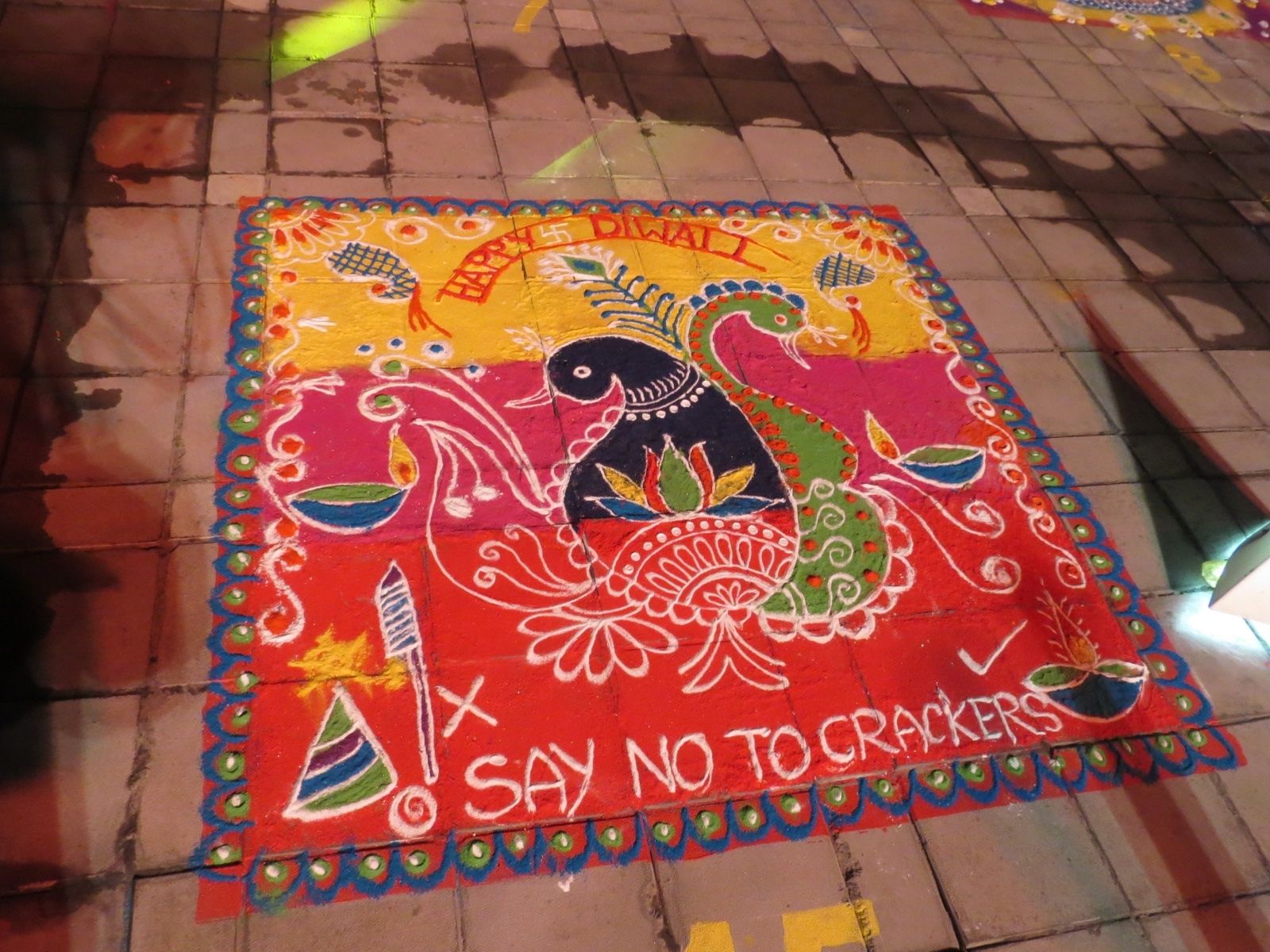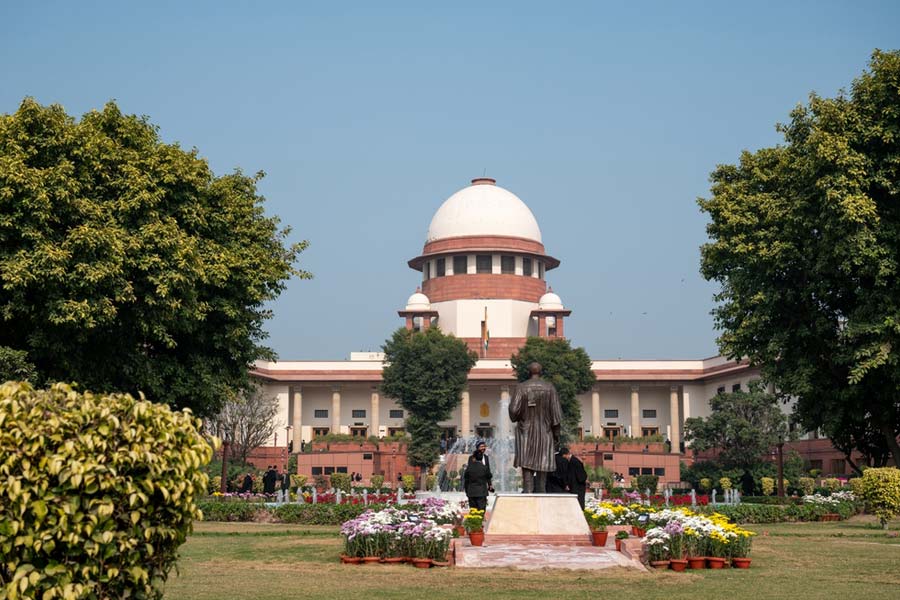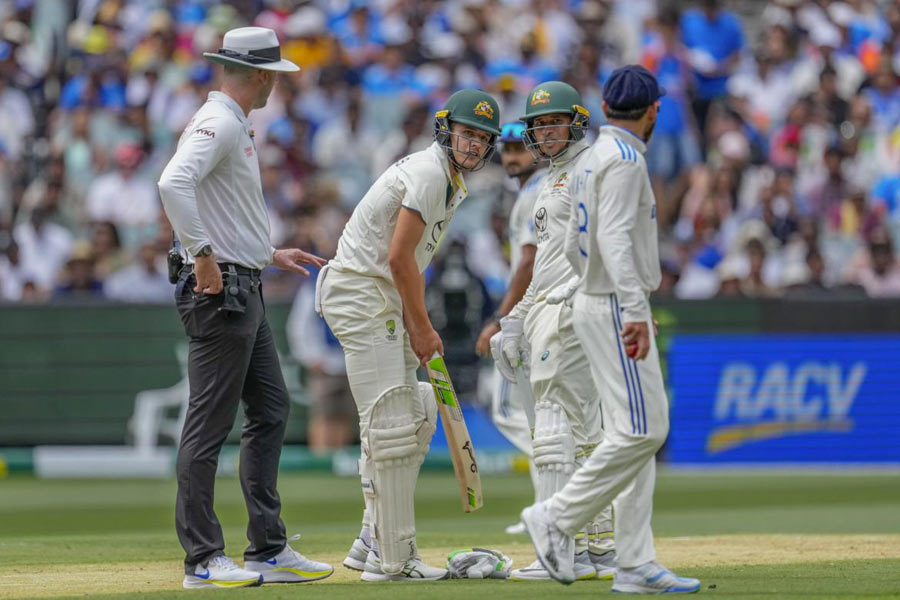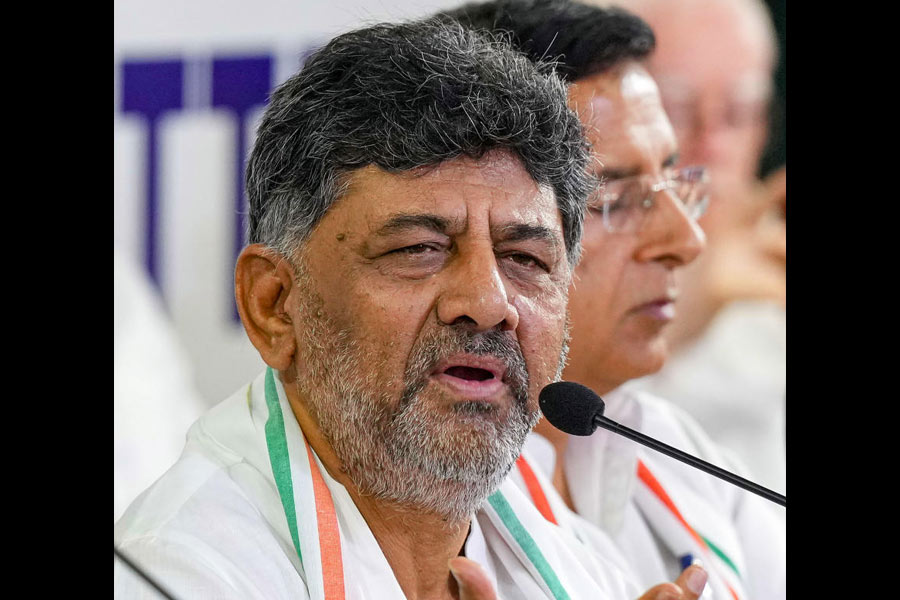If New Town registered a cracker-free Diwali, the authorities would like to give a part of the credit for that to the success of the New Town Diya Festival and Rangoli Competition, which involved the participation of several housing societies and some block residents, and spread the message on Diwali-eve of the need to reduce air pollution for the sake of Covid patients with breathing difficulties.
“The event worked to prevent fire crackers and also brought in a sense of conjunction of Kali puja and Diwali,” said Debashis Sen, chairman of Hidco which organised the event.
Mangaldeep Island, off the Major Arterial Road in New Town, had turned into a colourful hub of activity last Friday. The installation, as mentioned by Sen in his inaugural speech, was an appropriate venue for the festival.
The installation called Mangaldeep, created by architect Prabir Mitra, Sen pointed out, represents panchapradeep or five lamps being held in a welcome to visitors entering Calcutta through New Town. The boundary wall was lit up as was the grassy patch at a side.
Inside the fenced off island, 15 squares had been created, 4ft by 4ft in size. This was the space in which each team of four would have to create their rangoli. From 4am, women from 15 residential complexes across New Town put their heads together, using colours provided by the organisers.

The rangoli from Sunrise Point that came second carried an anti-cracker message. Sudeshna Banerjee
And after an hour and half, Sen and his wife Urmila took a round of the courtyard to decide on the winners.
NKDA chief executive officer Animesh Bhattacharya appealed to all those present to shun crackers on Diwali before announcing the results.
The appeal “Say no to fire crackers” was part of the design of the rangoli created by Sunrise Point, which was named the first runner-up. “It was one of the deciding factors that got them the rank. They had truly understood the meaning of the festival,” Sen told The Telegraph Salt Lake.
Shital Shekhar, a key member of the Sunrise Point team, said notices had been put up in every tower in their complex, announcing a fine for flouting the cracker ban. “We wanted to include the message in our rangoli too,” said Shekhar, a Maharashtrian who grew up watching rangoli being drawn at the doorstep every morning. “It is a ritual back home to ward off negative thoughts.”
The winner was the team from Mallika Malancha. Their rangoli featured a peacock painted diagonally in the allotted square and with intricate designs that used the third dimension of height also to good effect. Since their serial number was one, many quipped, tongue in cheek, on the slot being lucky.
Team member Saheli Dey Burman, however, emphasised that she had come to win. “When others spoke of giving it a try, I said we should aim to win or not go at all.”
Dey Burman, who loves to paint, shared two designs with others. “Since Hidco was providing the colours, we could not anticipate whether to plan for a very colourful rangoli or one with limited colours. So we kept both ready.” She also took upon herself the tough job of drawing the design. “I practised in the morning so I could draw from memory in case they did not allow consulting any external source. Thankfully, no such restrictions were there. Each of my teammates excelled in the part she was assigned.”
Restrictions did exist in another field. A rangoli that had caught the judges’ eyes was disregarded after the judges were tipped off that they had used a lot of props to get the shapes right. “We have to give credit for freehand sketching,” said a judge.
The team from Bhel Housing Cooperative Society came third.
“We got 18 registrations and were in a quandary as there were only 15 slots. But Uniworld City, Sukhobrishti and Millennium Tower backed out so we could accommodate the rest,” said Chaitali Srivastava, who co-ordinated with the participants on behalf of New Town Forum and News, which helped Hidco organise the event. “We bought the rangoli colours from Bhowanipore.”
Chance to dance
After the rangoli contest, four girls presented a dance item to the stotra Aigiri Nandini. All were students of Mahuya Adhikari, a CA-Block based teacher who danced solo later.
After a long mangalarati, led by two priests, the evening was livened up with a ghoomar performance by women in red ghaghra choli.
“But it wasn’t ghaghra choli,” laughed Rachita Pati, one of the five dancers. “We wore the sari in the Gujarati style and placed a red dupatta over our head like a pallu and tucked the two ends at our back.” A pallu, used as ghunghat, would have impeded hand movement during dancing. And unless one was very short, the length of the pallu would not have been long enough to have allowed a ghunghat, she explained.
The high point of the cultural performance was a dandiya dance to Bollywood hits.” We could not find enough male participants — there were just four — so finally two all-women couples had to be formed,” said Chaitali.

Participants showcase dandiya moves. Sudeshna Banerjee
Asutosh Anurag thus was in a much-wanted league. “I used to dance regularly in school and college. Three years ago, I danced again for a puja event in my complex. So though I have never danced dandiya before, I wanted to give it a try,” said the resident of Sukhobristi who also created the floral pattern on which the lampstand for the inauguration was placed.
If Asutosh had at least some experience in dancing, Mitali Das had none. “My friend Banashree insisted that I join. We could not even hit each other’s sticks initially and kept missing. Every day, some steps had to be changed as someone or the other found it too difficult. On the morning of the show, we had three hours of rehearsal. Yet, such was our state that some were going left while others were going right. Sumit, our choreographer, had his hands on his head in despair and refused to come and see us perform in the evening. We sent him a video clip afterwards and had to assure him that we had done well,” laughed Mitali, a resident of Highland Willows.
Indeed, the audience thoroughly enjoyed the energetic moves to foot-tapping numbers like Chogada tara (Loveyatri), Nagada sang dhol (Ramleela) and Kamariya (Mitron).
Some of them, like Shital and Mitali, were participating in both rangoli and dandiya. “We rushed home after the contest to change into our dance costumes,” Mitali exclaims.
The organisers are so happy with the success of the show that they are thinking of making it an annual event.











